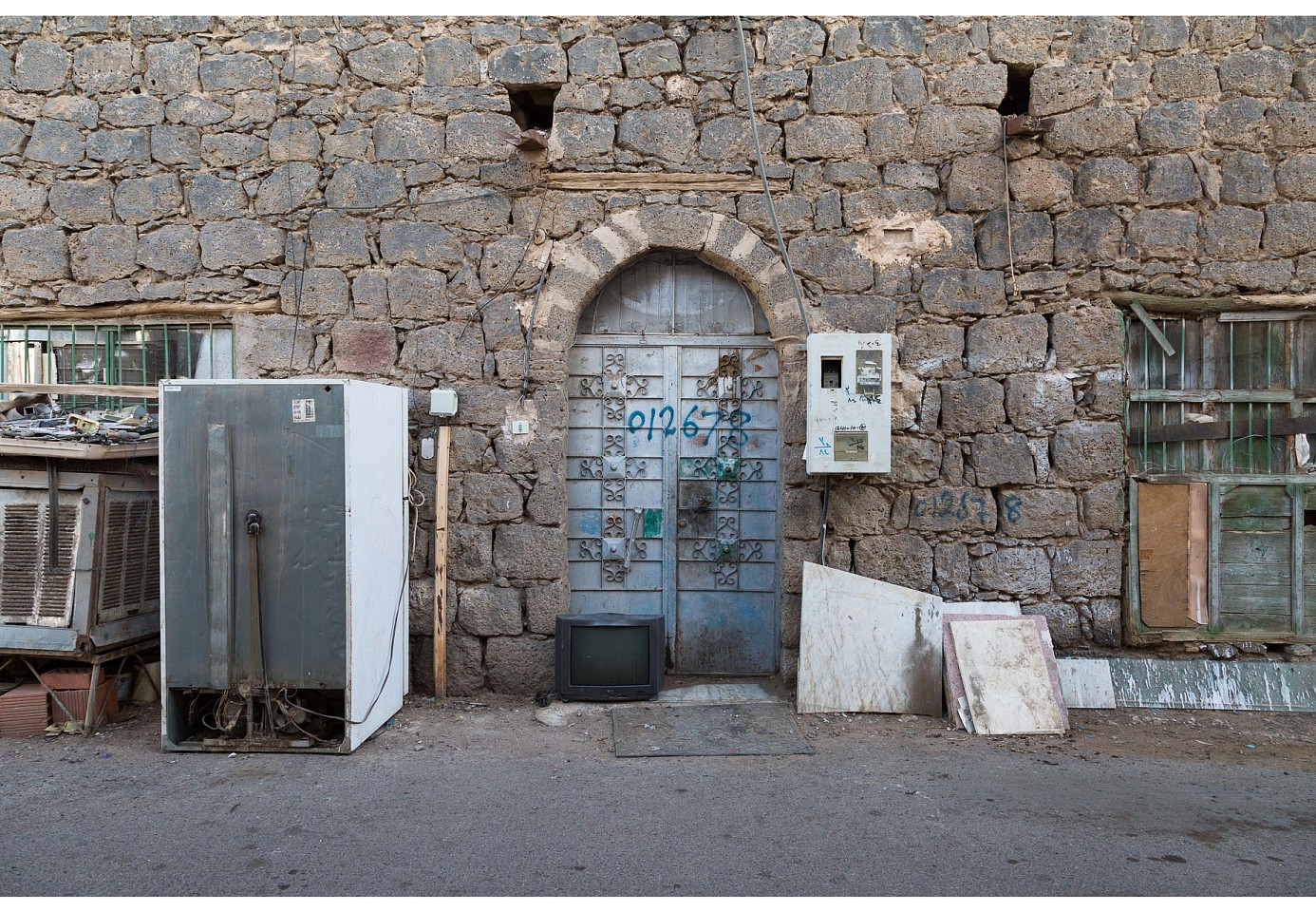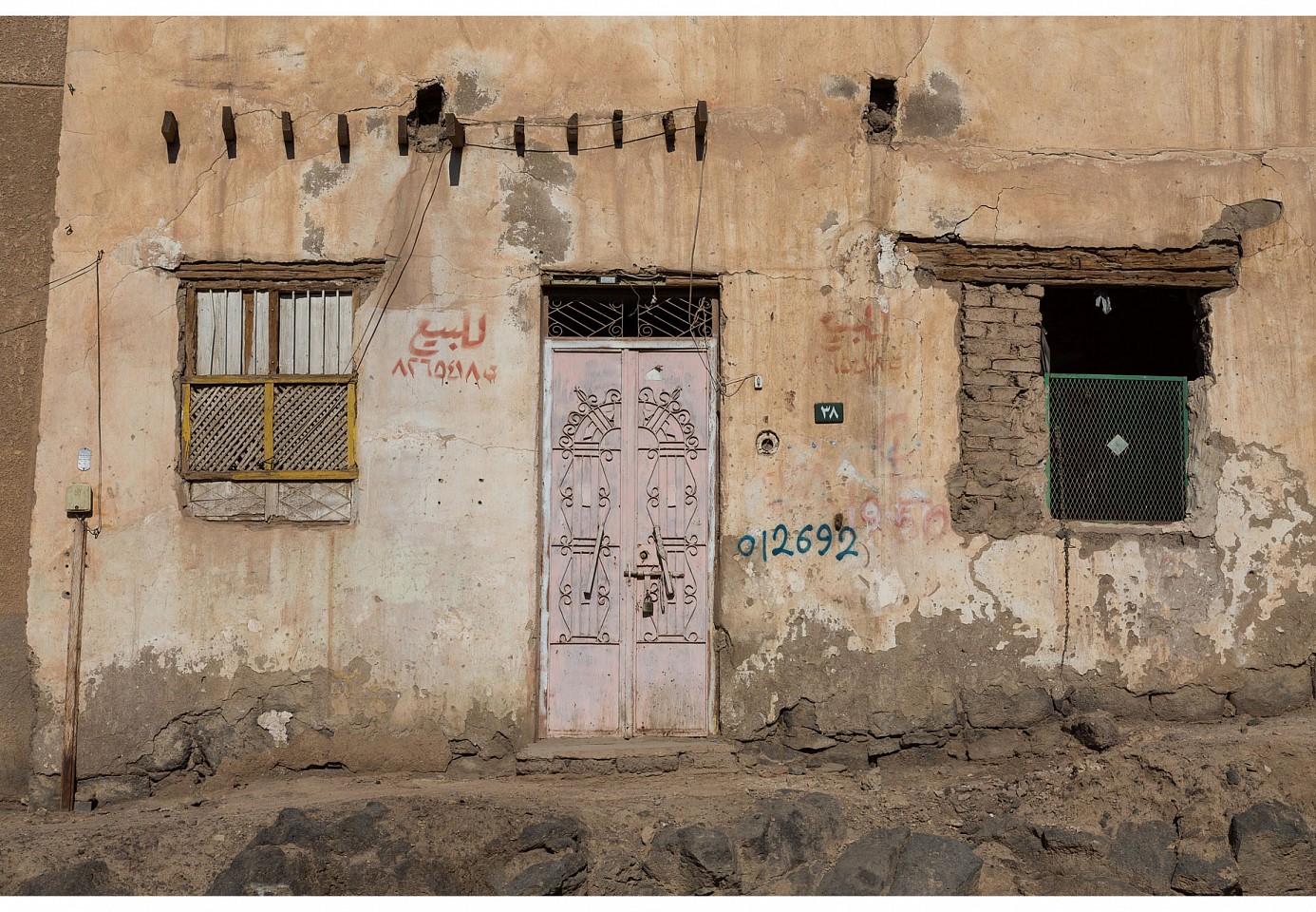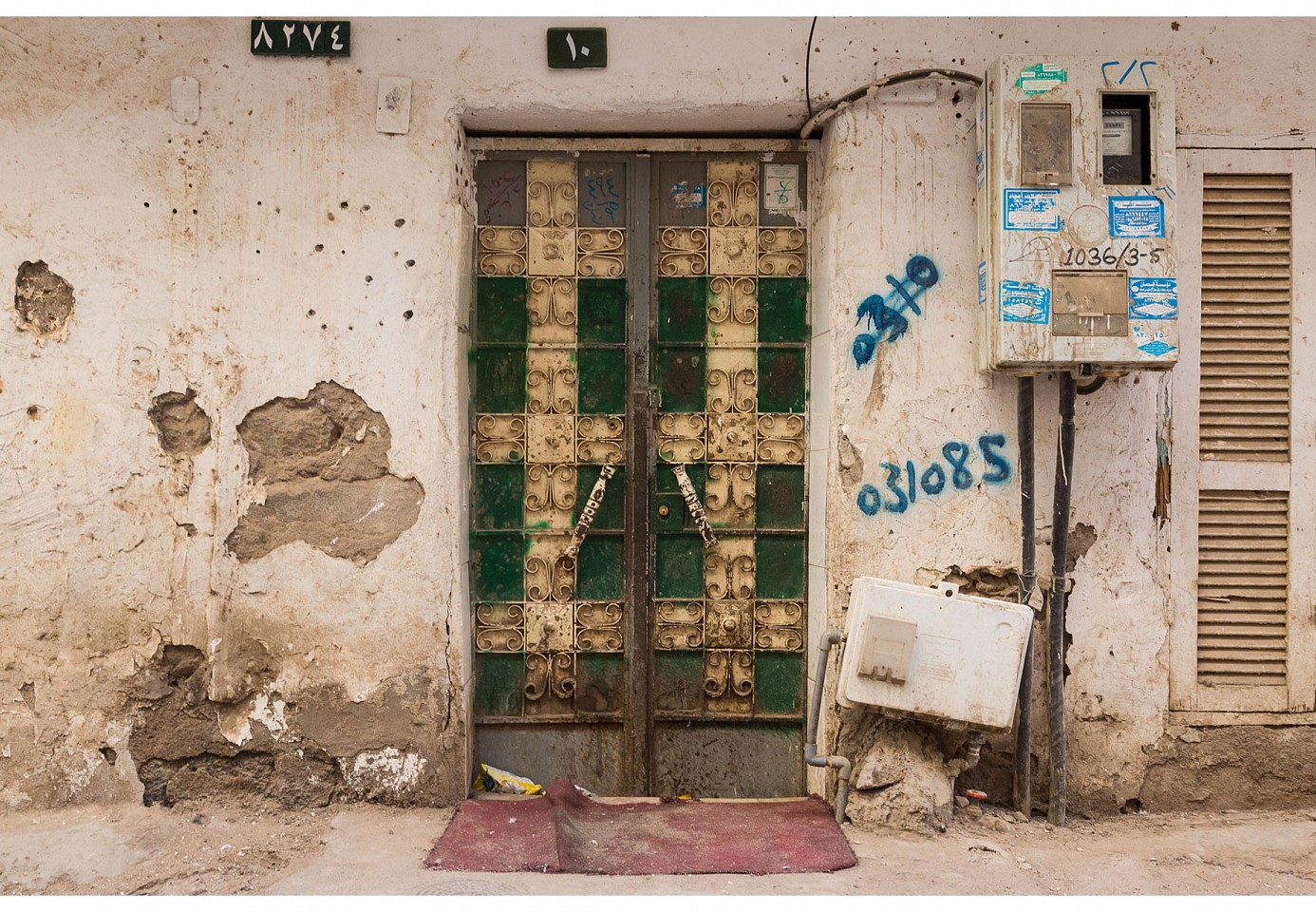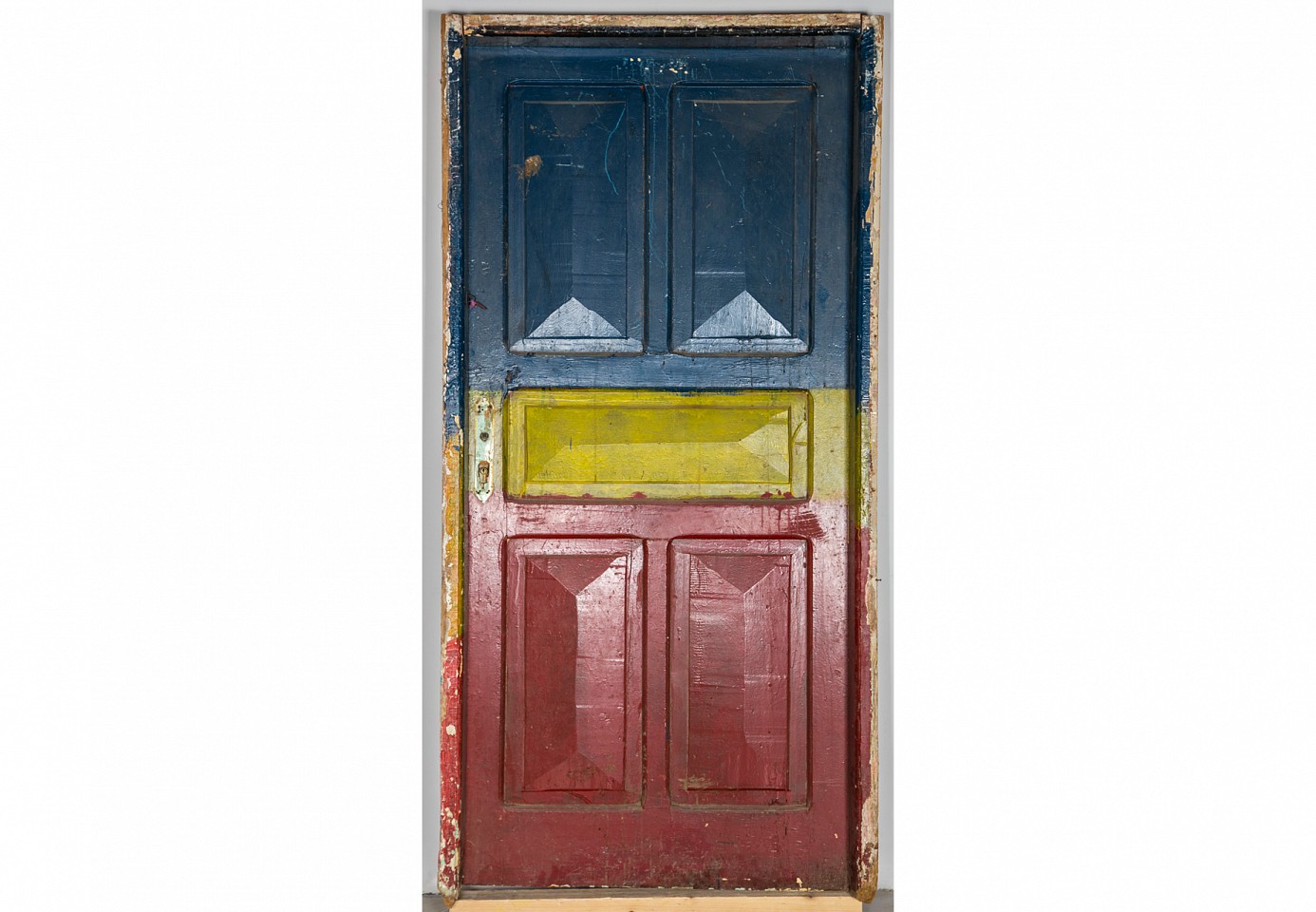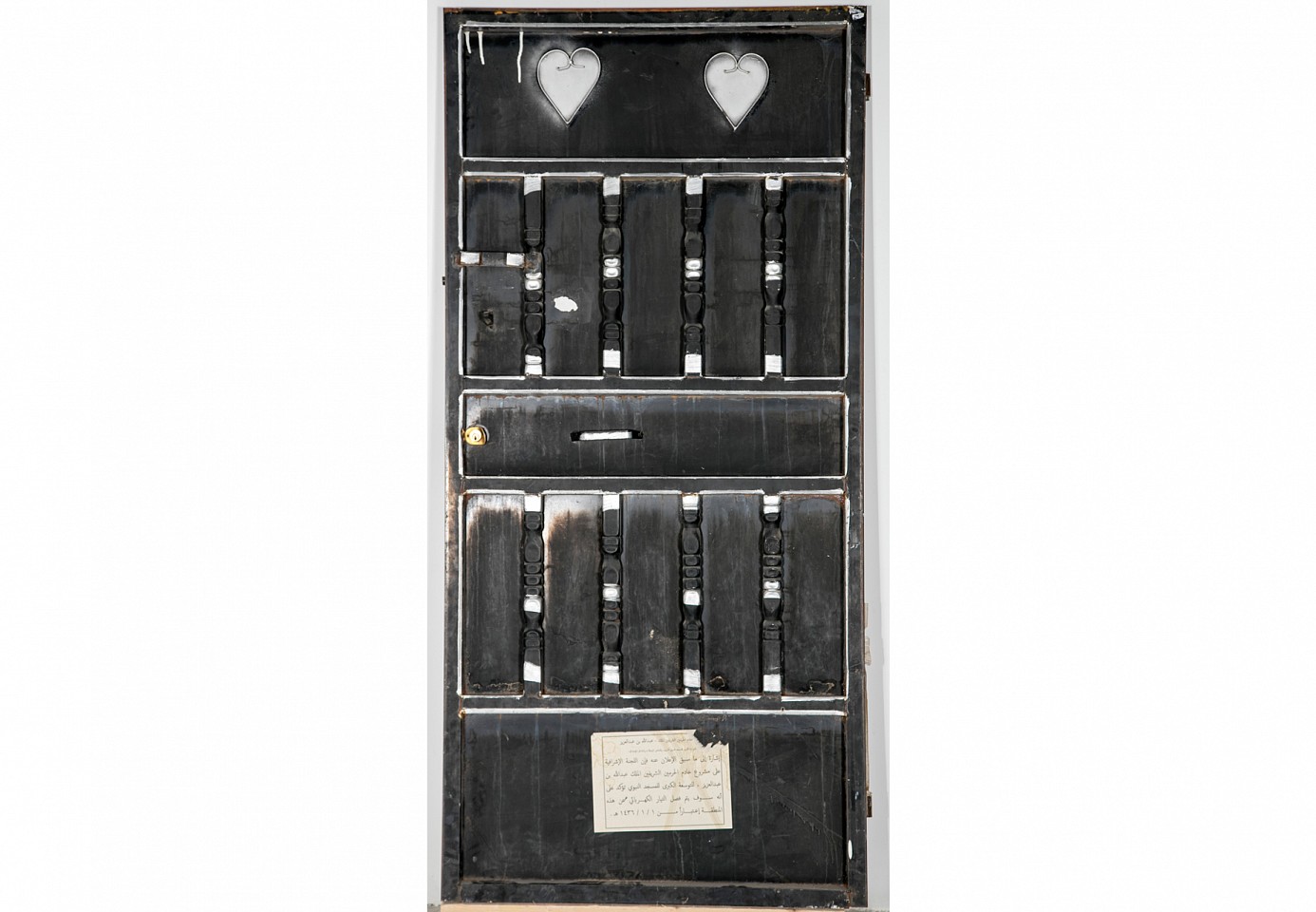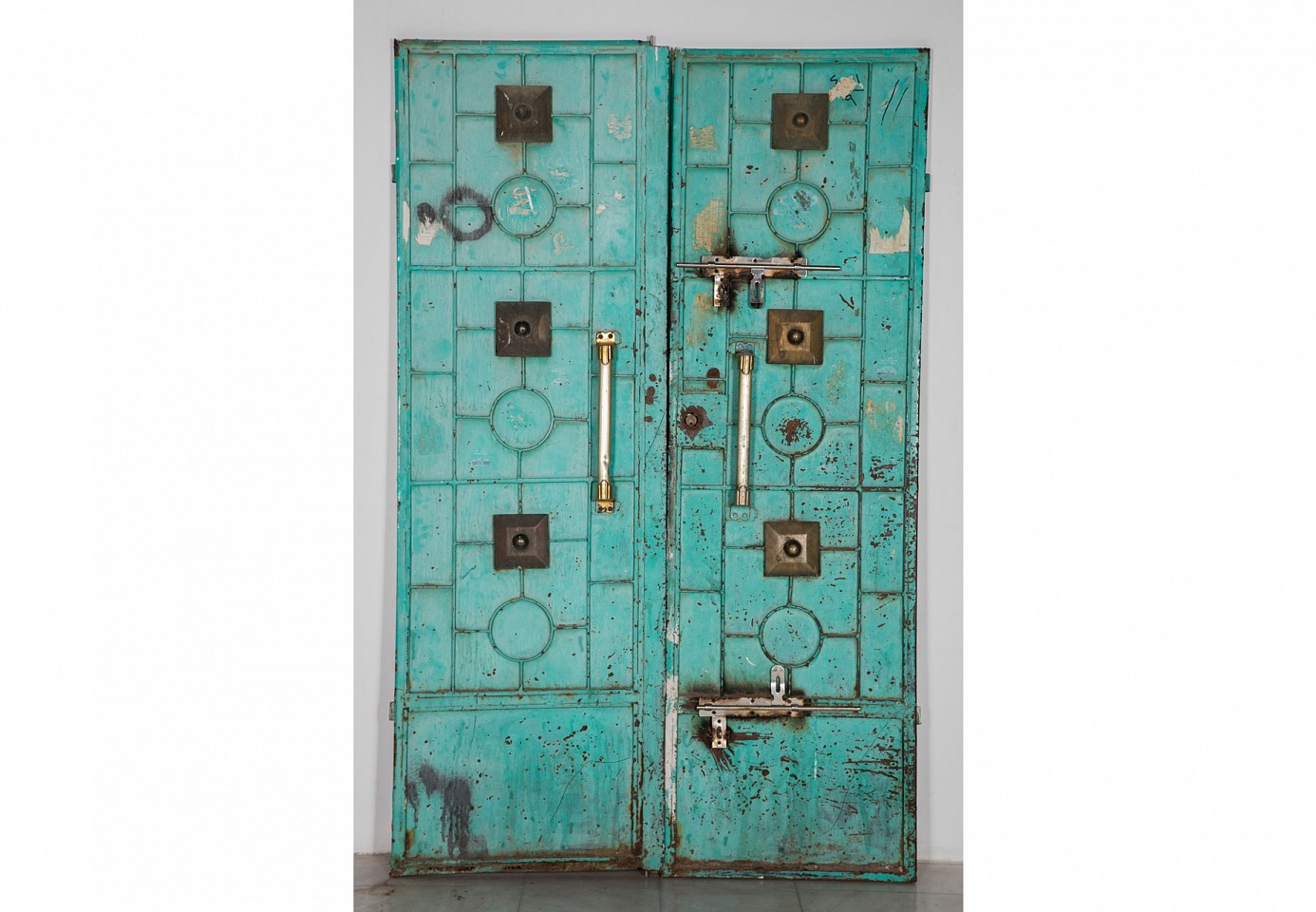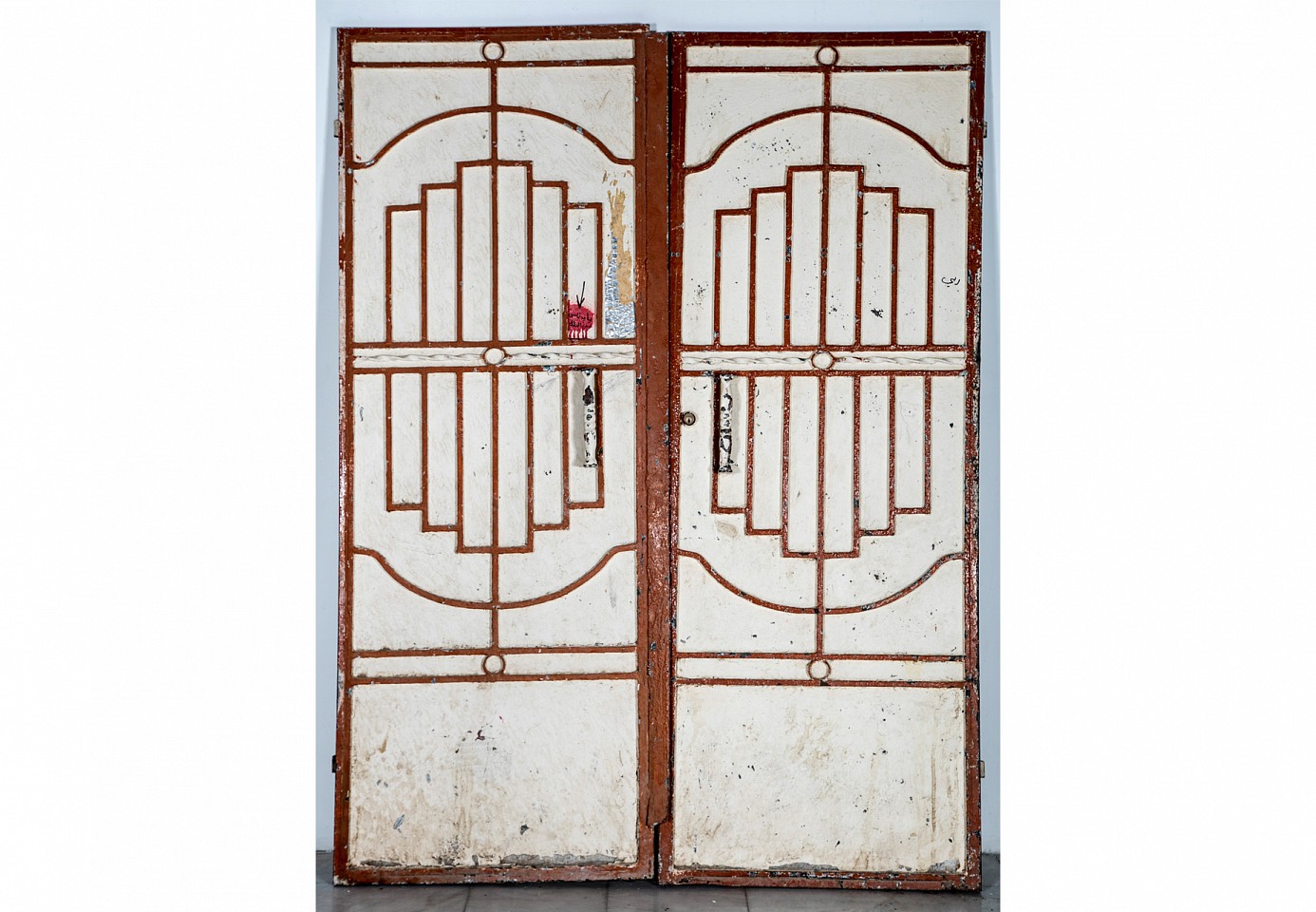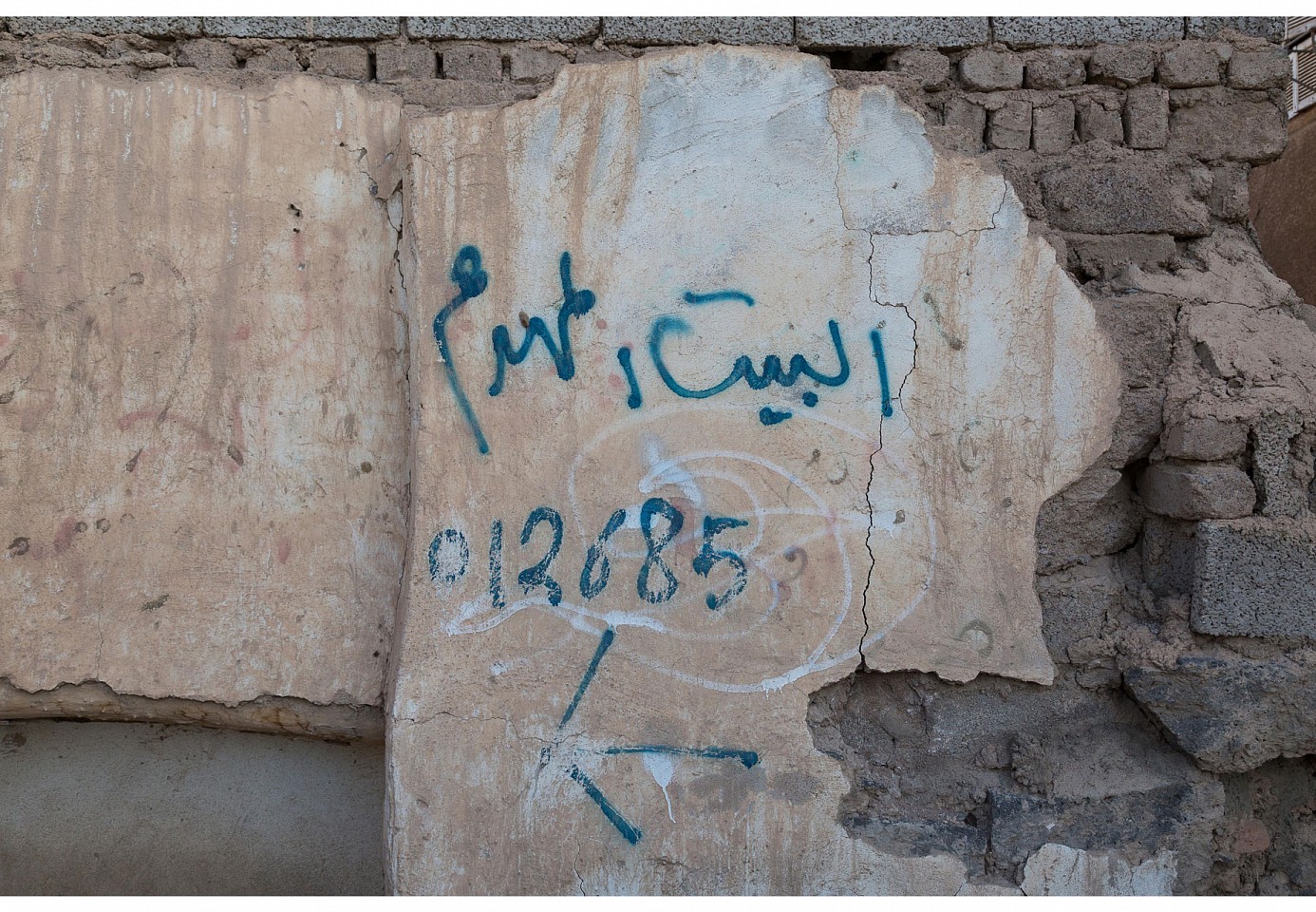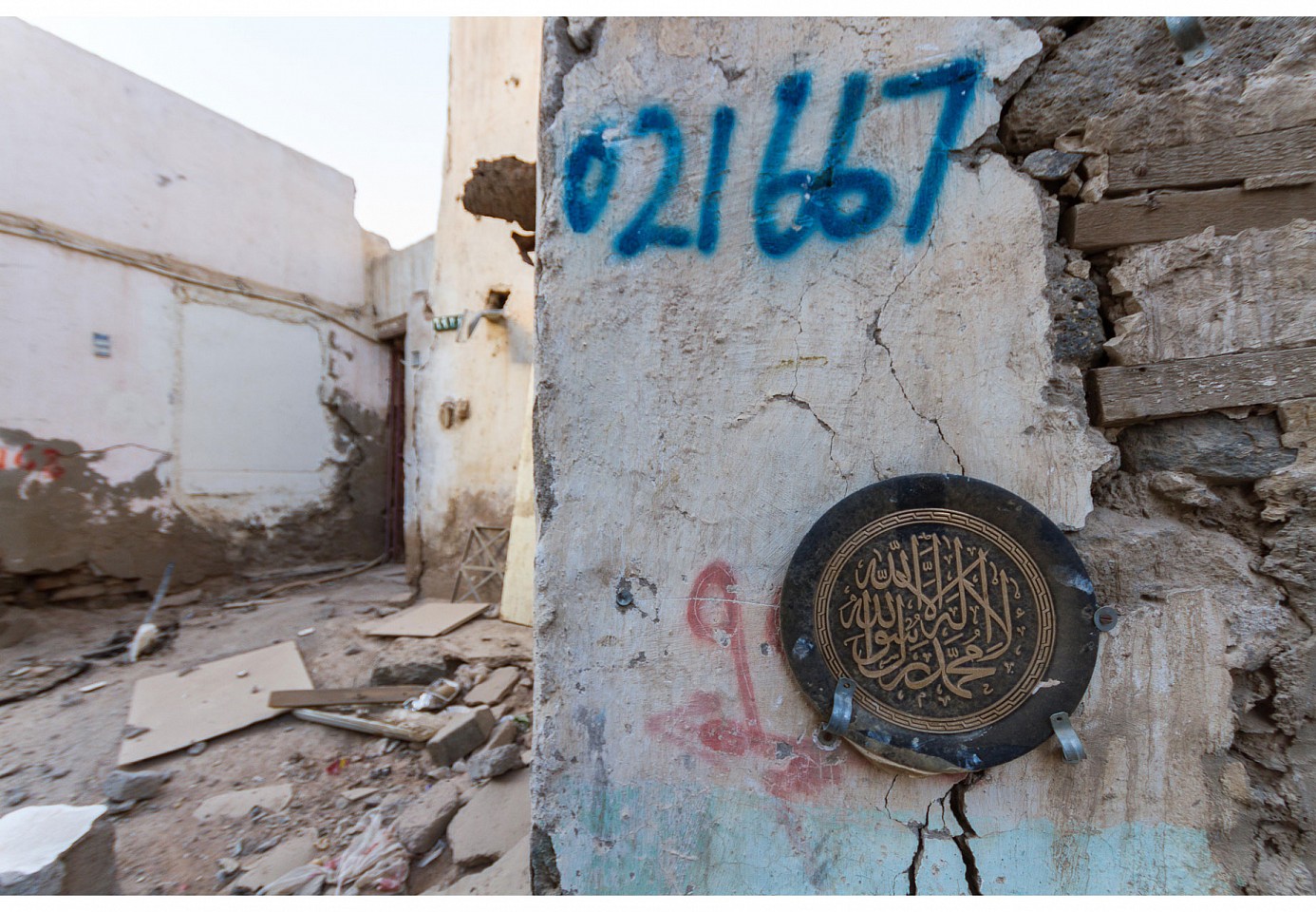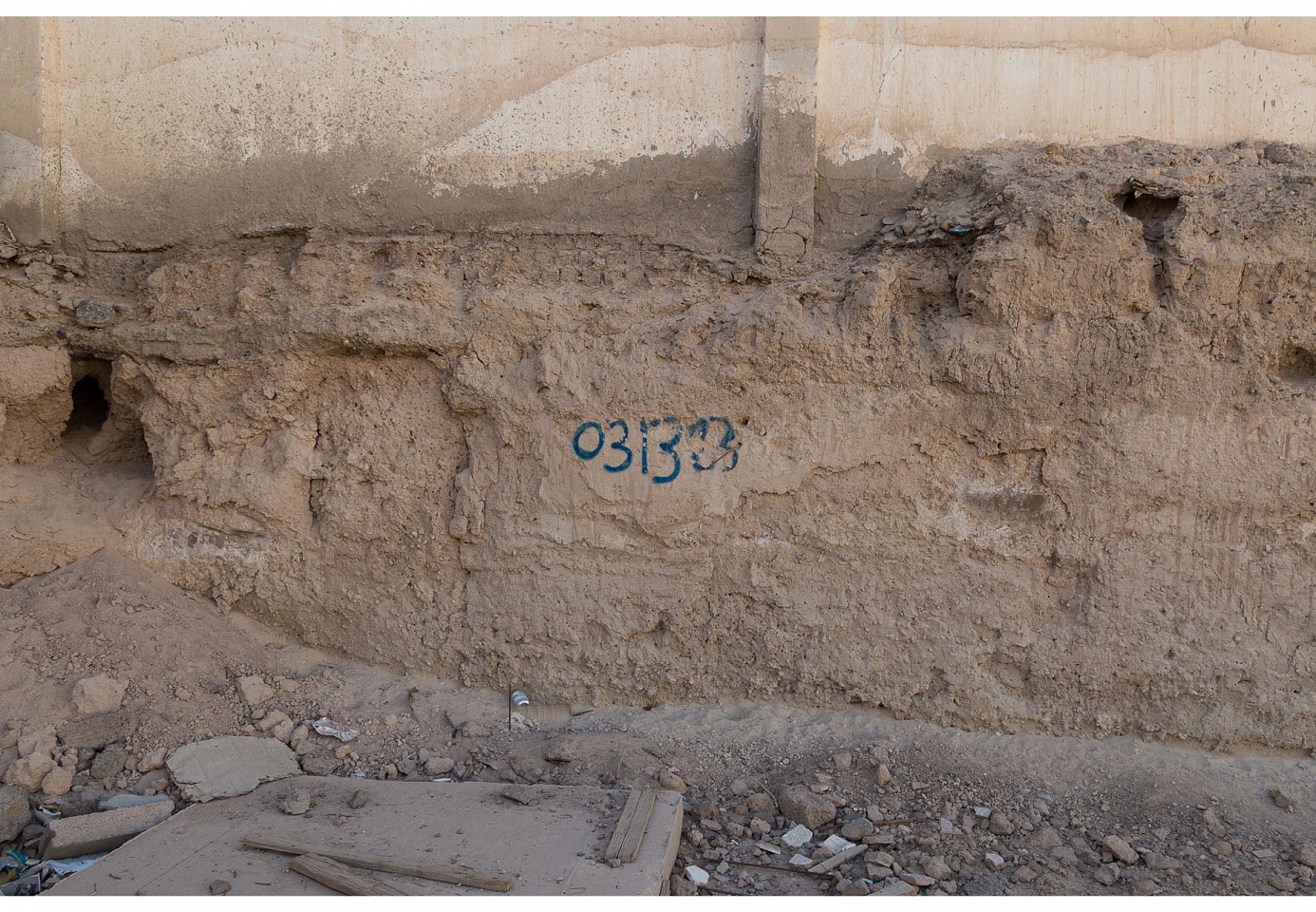Moath Alofi
012678
Pigment Print Mounted on Dibond
80 x 120 cm
Edition of 3, From Doors of Barlik series
MAO0018
Moath Alofi
012692
Pigment Print Mounted on Dibond
80 x 120 cm
Edition of 3, From Doors of Barlik series
MAO0017
Moath Alofi
031085
Pigment Print Mounted on Dibond
80 x 120 cm
Edition of 3, From Doors of Barlik series
MAO0016
Moath Alofi
Al-Amida
Wood, and metal parts
205 x 90 x 14 cm
From Doors of Barlik series
MAO0023
Moath Alofi
Al-Awali
Steel
190 x 90 x 9 cm
From Doors of Barlik series
MAO0028
Moath Alofi
Al-Ejaba
Steel
197 x 93 x 5 cm
From Doors of Barlik series
MAO0029
Moath Alofi
Al-Masanie I
Steel
187 x 115 x 5 cm
From Doors of Barlik series
MAO0027
Moath Alofi
Bab Al-Kuma
Steel
192 x 143 x 5 cm
From Doors of Barlik series
MAO0025
Moath Alofi
Demolishing Symbol 012685
Pigment Print Mounted on Dibond with 10 cm border
21 x 31.5 cm
Edition of 3, From Doors of Barlik series
MAO0005
Moath Alofi
Demolishing Symbol 017607
Pigment Print Mounted on Dibond with 10 cm border
21 x 31.5 cm
Edition of 3, From Doors of Barlik series
MAO0004
Moath Alofi
Demolishing Symbol 021667
Pigment Print Mounted on Dibond with 10 cm border
21 x 31.5 cm
Edition of 3, From Doors of Barlik series
MAO0007
Moath Alofi
Demolishing Symbol 031383
Pigment Print Mounted on Dibond with 10 cm border
21 x 31.5 cm
Edition of 3, From Doors of Barlik series
MAO0002












The depicted demolishing symbols mark the first phase of an impending destruction, these symbols are haunting, cancerous, apocalyptic.
Spread around the city, can be seen everywhere, yet it goes unnoticeable at first.
There’s a haunting feel about the numbers.
Some people fight against these numbers, by erasing, scratching and painting over these numbers.
12,000 housing units including mosques, schools, hotels, and governmental facilities, in addition to the acquired vast and undeveloped lands, which lead to the change in the mobility with this newly transformed spaces.
Doors document the physical aftermath of societal displacement, the doors act as an ID which represents the family’s residing in it.
This displacement affected the people in terms of the surprising nature of it, and forced under the shadow of transparency.
Moath started to document this 3 years ago.
The architecture, the use of the volcanic rocks, the building define the history of the area.
12,000 housing units including mosques, schools, hotels, and governmental facilities, in addition to the acquired vast and undeveloped lands, which lead to the change in the mobility with this newly transformed spaces.
Doors document the physical aftermath of societal displacement, the doors act as an ID which represents the family’s residing in it.
This displacement affected the people in terms of the surprising nature of it, and forced under the shadow of transparency.
Moath started to document this 3 years ago.
The architecture, the use of the volcanic rocks, the building define the history of the area.
12,000 housing units including mosques, schools, hotels, and governmental facilities, in addition to the acquired vast and undeveloped lands, which lead to the change in the mobility with this newly transformed spaces.
Doors document the physical aftermath of societal displacement, the doors act as an ID which represents the family’s residing in it.
This displacement affected the people in terms of the surprising nature of it, and forced under the shadow of transparency.
Moath started to document this 3 years ago.
The architecture, the use of the volcanic rocks, the building define the history of the area.
12,000 housing units including mosques, schools, hotels, and governmental facilities, in addition to the acquired vast and undeveloped lands, which lead to the change in the mobility with this newly transformed spaces.
Doors document the physical aftermath of societal displacement, the doors act as an ID which represents the family’s residing in it.
This displacement affected the people in terms of the surprising nature of it, and forced under the shadow of transparency.
Moath started to document this 3 years ago.
The architecture, the use of the volcanic rocks, the building define the history of the area.
12,000 housing units including mosques, schools, hotels, and governmental facilities, in addition to the acquired vast and undeveloped lands, which lead to the change in the mobility with this newly transformed spaces.
Doors document the physical aftermath of societal displacement, the doors act as an ID which represents the family’s residing in it.
This displacement affected the people in terms of the surprising nature of it, and forced under the shadow of transparency.
Moath started to document this 3 years ago.
The architecture, the use of the volcanic rocks, the building define the history of the area.
The depicted demolishing symbols mark the first phase of an impending destruction, these symbols are haunting, cancerous, apocalyptic.
Spread around the city, can be seen everywhere, yet it goes unnoticeable at first.
There’s a haunting feel about the numbers.
Some people fight against these numbers, by erasing, scratching and painting over these numbers.
The depicted demolishing symbols mark the first phase of an impending destruction, these symbols are haunting, cancerous, apocalyptic.
Spread around the city, can be seen everywhere, yet it goes unnoticeable at first.
There’s a haunting feel about the numbers.
Some people fight against these numbers, by erasing, scratching and painting over these numbers.
The depicted demolishing symbols mark the first phase of an impending destruction, these symbols are haunting, cancerous, apocalyptic.
Spread around the city, can be seen everywhere, yet it goes unnoticeable at first.
There’s a haunting feel about the numbers.
Some people fight against these numbers, by erasing, scratching and painting over these numbers.
The depicted demolishing symbols mark the first phase of an impending destruction, these symbols are haunting, cancerous, apocalyptic.
Spread around the city, can be seen everywhere, yet it goes unnoticeable at first.
There’s a haunting feel about the numbers.
Some people fight against these numbers, by erasing, scratching and painting over these numbers.
Doors of Barlik:
The early stages of demolition have appeared again. Numbers and signs are sprayed on the walls and doors of some 12,500 housing units across the holy city of Madinah. The depicted demolishing symbols mark the first phase of an impending destruction, and the doors document the physical aftermath of societal displacement. Moath begins to explore the reoccurring residential rehabilitation Madinah has gone through in the past, and is currently undergoing. The artist questions the necessity of producing new urban spaces, and its affect on the cultural, architectural and social character of the area.
Doors of Barlik examines the visible spatial components of a social and urban transformation in progress.
أبواب برلك
ظهرت الأرقام على جدران ومداخل مايزيد على 12ØŒ000 عقار ÙÙŠ المدينة المنورة
هذه الأرقام تØدد المرØلة الأولى من مشاريع إزالة تمت وأخرى وشيكه. وتوّثق الأبواب آثار مابعد التغيير والإزاØØ© المجتمعية.
Ùمن خلالها بدأ معاذ ÙÙŠ اسكتشا٠عملية Ø§Ù„Ø¥ØµÙ„Ø§Ø Ø§Ù„Ø³ÙƒÙ†ÙŠ التي مرت بها المدينة ÙÙŠ الماضي، والتي تختبرها الآن. ويتساءل الÙنان عن ضرورة إنتاج المساØات الØضارية الجديدة، وتأثيرها على الطابع الثقاÙÙŠØŒ والمعماري والاجتماعي للمنطقة.
تدرس"أبواب برلك" العناصر المكانية الواضØØ© للتØول الاجتماعي والØضري الجاري...

